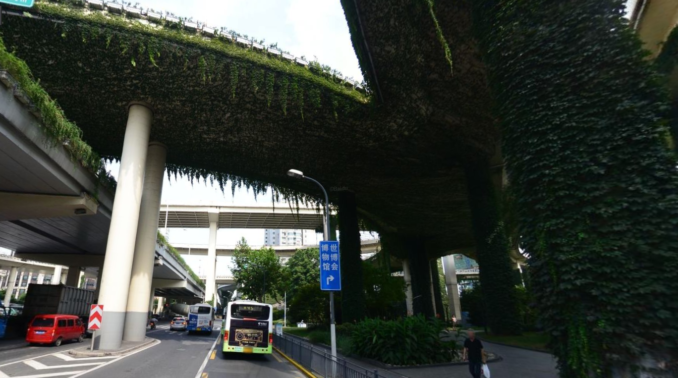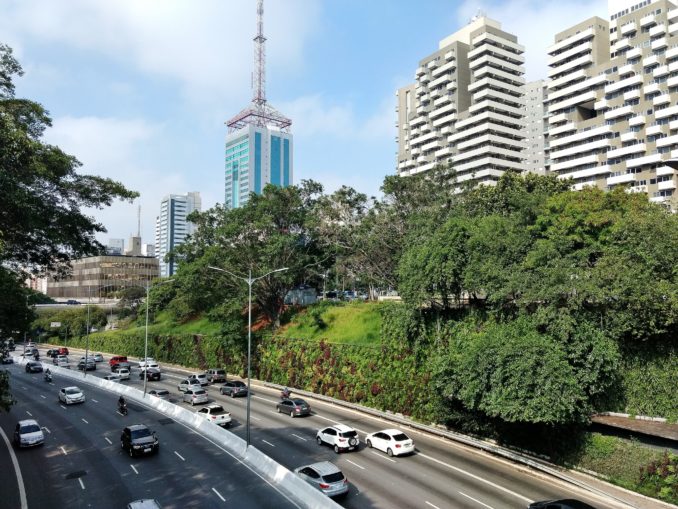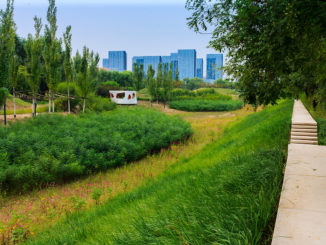RMIT University recently the announced a new project Transforming Melbourne Motorways’ Noise Barriers which is proposing “ecological buffers” using vertical gardens and green walls to improve noise and air pollution.
The article states that “75% of Melbourne’s air pollution is caused by vehicle emissions which carry harmful chemicals that can have devastating health impacts including cardiac arrest, low birthweight, asthma and reduced lung function in children.”

Will vertical gardens and green walls reduce air pollution? There have been examples of cities using green walls to reduce air pollution including in Shanghai that cover the construction site hoardings and São Paulo, Brazil use plants on freeway(multi-lane high speed roads) walls to reduce air pollution. A 2012 study showed adoption of green walls across large areas of street canyons reduced concentrations of Nitrogen dioxide (NO2) and PM10 by as much as 15% and 23% respectively. [1]

Long Term Solutions versus Short Term Solutions
In undertaking such a project, the researchers would need to analyse the premise and whether we as designers are providing solutions that address the problem to achieve the best outcome. Often we need to review whether we focus on the source of the problem or do we mitigate the issue at the end point? This is the conundrum that we as designers face especially when finding solutions to environmental issues especially when it comes to large scale systems (natural and constructed)
In Australia, there are several contributing factors to vehicle air pollution including fuel quality [2], average age of the vehicle fleet and lack of vehicle pollution testing and emissions standards for new vehicles. Should researchers and stakeholders focus on lobbying government to promote alternative transport and initiatives to encourage more fuel efficient and zero emissions vehicles sales (including cars, buses, trucks)? or is that a long term goal that may be too hard to achieve and therefore the focus should turn to finding a short term solution to mitigate the issue that could have an immediate impact such as green walls and green facading?
Testing
Green walls and vertical greening systems (assume that the project refers to plants on cellular or pocket system) could an interesting solution to the problem, there are many variables that will need to assessed and the researchers at RMIT should look to have field studies that compare green walls with other possible solutions such as large shrubs, tall hedges and climbers on wire frame systems.
The researchers should consider studying several variables including the type of greenwall system, plant species, micro-climate, cultivation requirements, construction cost, maintenance safety requirements. Also the project will need to consider what happens to the pollutants captured by the plants? What happens to the particles when it rains?
There can be considerable pollution of surrounding waterways adjacent to freeways due to heavy metals from tailpipe emissions, brake dust washing into waterways causing major environmental issues as they end up as highly polluted silt on the riverbed.
Final Thoughts
Green walls on roads could become part of green infrastructure initiatives across cities, however I fear that the cost of installation and maintenance could be prohibitive for large scale adoption for freeways (multi-lane high speed roads). I hope that the research finds a partner who is willing to look at green walls along with other alternatives to find a solution to the air pollution problem caused by vehicles on freeways.
Article by Damian Holmes – Editor of World Landscape Architecture
[1] Pugh, T. A. M., A. R. MacKenzie, J. D. Whyatt, and C. N. Hewitt (2012). The effectiveness of green infrastructure for improvement of air quality in urban street canyons. Environmental Science & Technology, 46 (14), 7692-7699. DOI: 10.1021/es300826w
[2] The Federal Chamber of Automotive Industries (FCAI) -Fuel Quality & Emissions https://www.fcai.com.au/fuel-quality-and-emissions/fuel-quality-and-emissions
Video Credit: Transforming Motorways’ Noise Barriers-updated (RMIT)
Image Credits:
Shanghai – Boston Ivy covering underside of freeway junction (Baidu)
São Paulo, Brazil – Flickr User MAURO CATEB


